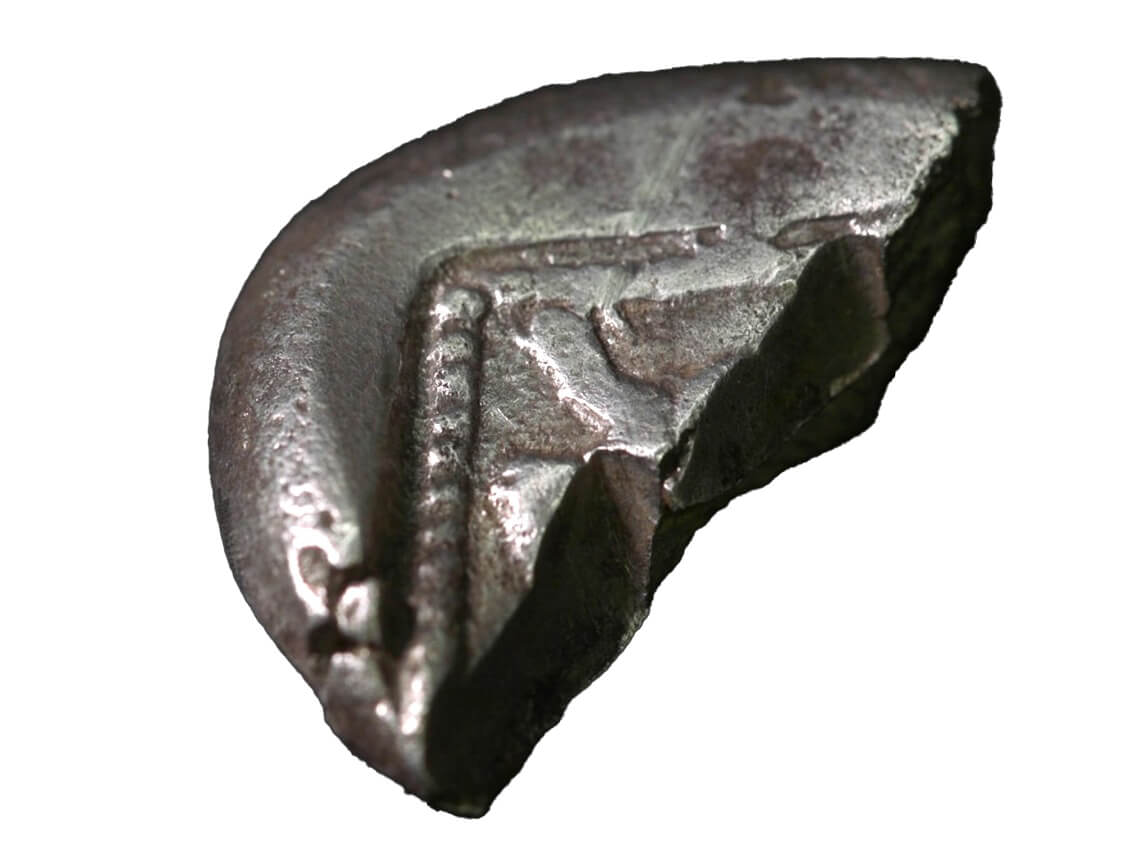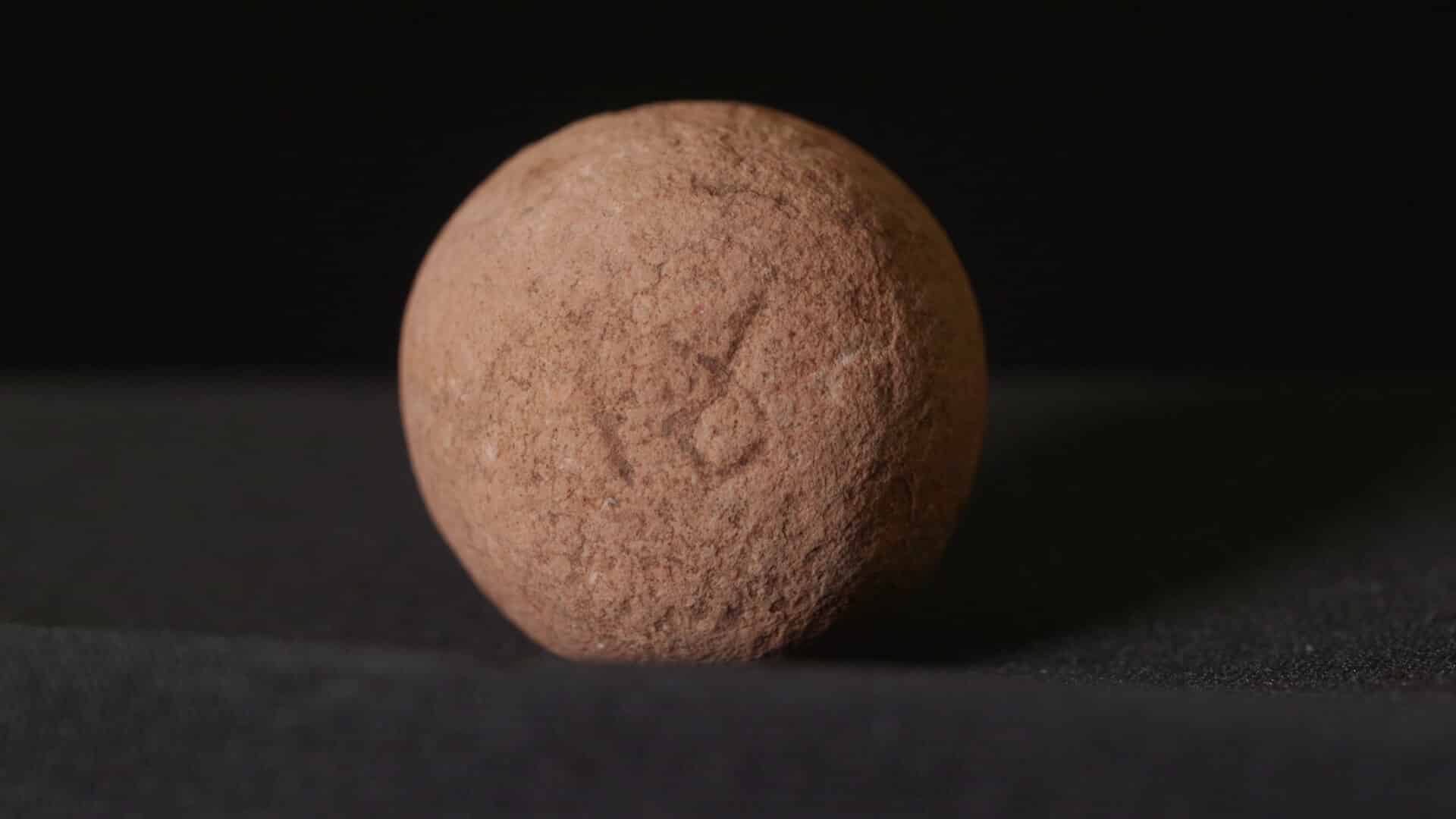The coin, which is one of the earliest evidences in Israel of the transition to the use of coins, was discovered in an excavation by the Antiquities Authority funded by Israel Routes.

Rare evidence of the beginning of the use of coins was recently discovered in the excavation of the Antiquities Authority in the Judean Mountains. The excavation revealed a very rare coin, made of silver, dating from the Persian period (5th/6th century BC). The excavation, which was conducted as part of infrastructure works on road 375 from Tzur Hadassah to road 60 at the initiative of the Netibi Israel Company, also revealed a structure older than the mint - from the days of the Rishon Temple, where another evidence of trade that took place in the area was discovered, in the form of a shekel weight.
He discovered the rare coin Semyon Gendler, Director of the Judea District at the Antiquities Authority. The coin is purposely broken and one side is stamped square. It is evident that the imprint on it is sunken, while in later periods the imprinting techniques were perfected and present figures that stand out from the coin.

According to Dr. Robert Cole, Head of the Coins Branch at the Antiquities Authority, "The coin that was discovered is extremely rare - it joins only a dozen coins of its kind, which were found in organized excavations in Israel. The coin was minted at a time when the use of coins was just beginning in the world. This finding provides additional information on the way trade was conducted, and on the process the world economy went through from payments through the weighing of silver pieces (pieces) to the use of currencies. The coin belongs to a group of very ancient coins, minted outside the borders of the Land of Israel - in the area of Greece, Cyprus and ancient Turkey. These began to appear in the 5th/6th century BC on sites in Israel. The fact that the coin was found at the site, in a landslide dating to the middle of the 4th century BC, shows us that the transition from using silver to coins was gradual, and took hundreds of years.
Another evidence of the gradual transition is the fact that the silver coin, which was originally created as a coin, is found in half, after being deliberately cut in half. From this it can be understood that it was used in the 4th century BC, as a piece of silver for weighing, and not as a coin passed on to a merchant, even though at the same time, coins had already begun to be used.
According to Michal Marmelstein and Dani Ben Ayon, the dig managers on behalf of the Antiquities Authority, "The site where the special coin was discovered was first established in the days of the First Temple (about 2,700 years ago), and dates back to the 7th century BC - the days of kings Hezekiah, Manasseh, Amon and Josiah. The site was located in the countryside of the Kingdom of Judah, whose center was in Jerusalem. From this period, known for the development of settlements in the Kingdom of Judah, the "House of the Four Regions", which characterizes Israeli sites, was discovered, as well as a shekel weight, which is another evidence - earlier, of the existence of trade at the site. The scale, which was discovered on the floor of one of the rooms in the same building, is made of stone in the shape of a dome, and was used to weigh products such as metals, spices and other expensive products. On top of the weight is carved a sign that resembles the letter E in Hebrew - and next to it is the number one in Egyptian hieratic script, denoting one shekel. The weight weighs 11.07 grams. "This is basically the scale used in the Judean region, which the merchants used in order to accurately weigh goods," explain the archaeologists of the excavation.
Engineer Moriah Rif, Director of the Southern Projects Department, Israel Routes Company: "We started the significant project on road 375, the purpose of which is to expand the road to two two-lane routes, for a length of 8 km, including the regulation of intersections on this route as well as the expansion of underground passages that exist today. We knew that this was an area that required cooperation with the Antiquities Authority, in order to check whether there was indeed the possibility that during the works, archaeological findings would be discovered. Along with progress in the works, indeed in this area we allowed the Antiquities Authority to carry out the works and there is no doubt that the find is amazing. The thought that thanks to embarking on an infrastructure project such important and significant findings were discovered is undoubtedly exciting."
According to Eli Escozido, director of the Antiquities Authority: "Every time I am surprised anew, how valuable findings for research are discovered in unexpected places. The tiny coins are one of the most important sources of information in archeology because they contain visual information, along with addresses and dates. From a small object like a coin, you can trace the train of thought of humans, and see that our economic conduct has not changed for thousands of years - only the technologies are perfected. In this context, it is interesting to think about the future archaeological research in a world that moves to electronic commerce".
More of the topic in Hayadan:
- A rare half shekel silver coin from the days of the Great Revolt was discovered in the Ofel excavations in Jerusalem
- Less "round" coins, but much less coins
- "Religious tolerance" worded in the seventh century AD
- Things that donors know: how did they weigh the earth and what are we doing to it?
- An ancient weight of two shekels from the First Temple period was discovered at the Western Wall
